I’ve written before about cycling the Hurunui Heartland Trail between Waikari and Christchurch. If you can get someone to drop you along the way, it’s a good day out. There’s hills, gravel, sealed roads and off-road cycleway. There’s rolling countryside, limestone valleys, mountain views, river crossings and rural townships.
Over the summer break, I finally got around to completing the full trail, taking the train to Kaikōura and cycling back to Christchurch over three days. It’s a 260-kilometre trip that takes the inland route to Mt Lyford and Waiau and back roads through Culverden, the Pyramid Valley, Amberley and Rangiora.
Taking the train to Kaikōura

I had never taken my bike on the train before so it was a bit of a learning experience. My husband and I were keen to start and finish our trip at home (rather than relying on vehicle support) so we started by cycling to the train station. So far, so easy.
Before we could check our bikes onto the train, we had to remove the pedals and loosen the handlebars so they could be turned in to make the bike as flat as possible. I was a bit nervous about this because neither of us had done it before. However, it was actually quite straightforward – and having practised at home ahead of time, it only took a few minutes to get each bike ready on the day.
For others who have yet to do this, I suggest finding a YouTube video demonstration. We needed a small spanner to remove our pedals, but some bikes only require an Allen key (which we also needed to loosen the handlebars). Once you’ve worked out the best way to position yourself in relation to the pedals, the pedals will stay still and undo easily. (We first tried it before watching a video demonstration and had trouble working out if we were loosening or tightening the pedals.)
Kiwirail requires bikes to be free of mud and all bags and accessories must be removed from the bike. Our tickets entitled us to one piece of luggage (bikes were $20 extra) and one small bag on the train – so we stuffed pedals, bike pumps, water bottles and other small bike bags into one pannier as checked luggage and took the other pannier on board with us. We just had to wheel our bikes (with checked panniers) up to the front of luggage carriage and the staff loaded them safely away from everyone else’s gear.
The train journey itself was relaxing and a highlight of our trip. Because it’s billed as a scenic ride, the carriages are spacious with big windows for enjoying the scenery. We liked being able to sit back and forget about the traffic. And it was a beautiful calm and sunny day, so the countryside and coast were looking stunning. We saw dolphins near Kaikōura, and seals lolling about in the sea and sunbathing on the rocks.
It all went very smoothly. Our bikes travelled well and it didn’t take long to put them back together at the other end.
Kaikōura to Mt Lyford
The train arrives in Kaikōura mid-morning, leaving plenty of time in the day for cycling. There is nowhere along the trail to get food or drink until Waiau, so we stocked up before we left Kaikōura. (There is a café on the train, but it’s a bit pricey for fairly average fare.)
The cycle route heads inland from the Kaikōura township, taking back roads (from Ludstone Road) to a gravel road that runs through the Kōwhai River and connects to the Inland Road on the other side. The water wasn’t very deep when we were there, but we opted to walk our bikes through to avoid sliding around on the rocks.
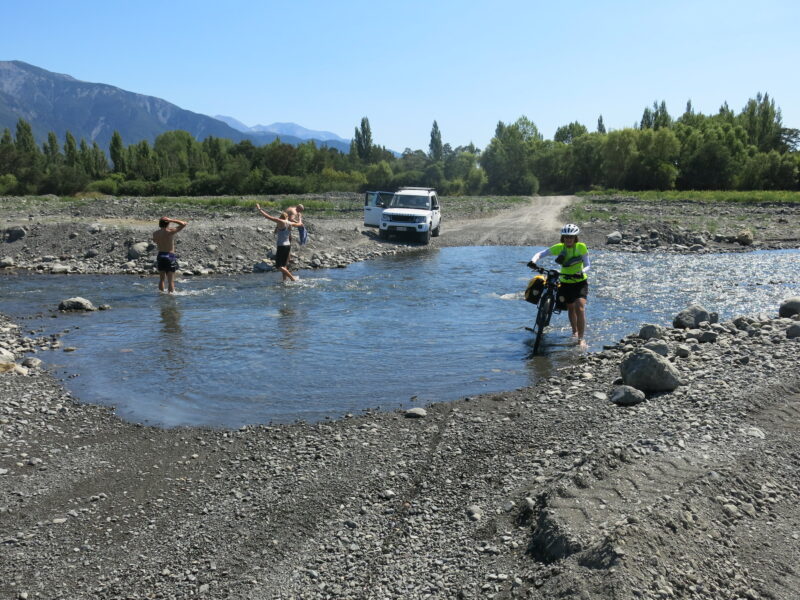
From there, it was simply a matter of following the road all the way to Mt Lyford.
This was probably the hardest day of our ride, even though it was the shortest (just over 60 kilometres). Heading inland meant we were climbing most of the day, ascending 1400 metres over the course of the ride, and we had full sun and little breeze for the first few hours. Initially, it was a gradual incline, but later it became steeper, with a mix of up and down (but mostly up).
The road crosses many rivers along the way, so every time we reached one, we had a wonderful sweeping descent down to the bridge. But, of course, that also meant a climb out the other side. Even though we’d packed light, we found cycling with panniers made a big difference to our ride.
However, there were lovely views of the hills, mountains and countryside. We especially liked the scenery at the Kaikōura end, possibly because we were fresher at the start and there was little traffic. And we enjoyed spotting the Christmas decorations on all the farm mailboxes we passed.
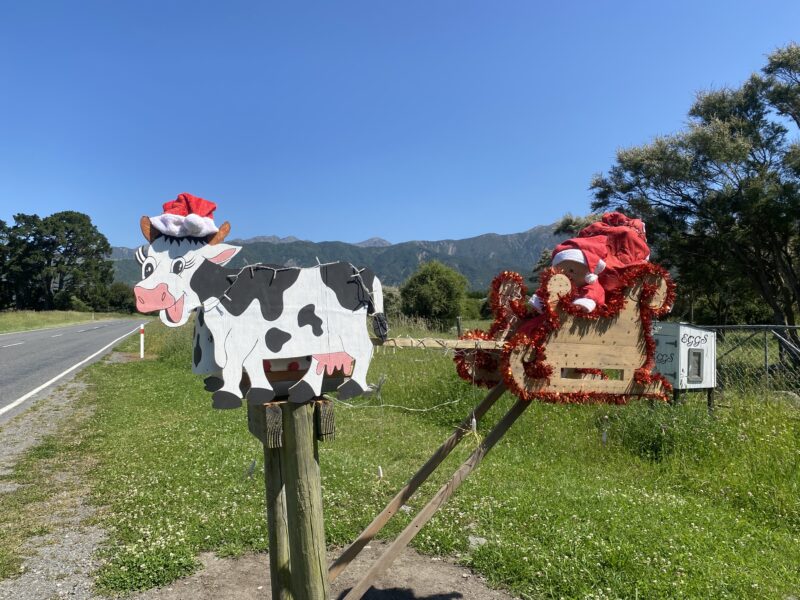
Mt Lyford village is about three kilometres up a dusty gravel road, but thankfully we only had to go halfway along to reach our accommodation. And we were able to walk back down the hill for dinner at Mt Lyford Lodge.
Mt Lyford to Waipara Gorge
It’s mostly downhill from Mt Lyford to Waiau, so we had an easy smooth descent when we left the next morning. (Unfortunately, we were four kilometres down the road before we realised we’d left our water bottles behind so we had to turn around and climb back up the hill again.)

The landscape opens up as the road gets closer to Waiau. The big surprise was discovering a facility for high-performance cars in the middle of nowhere, complete with purpose-built factory, garaging and race track. I hadn’t heard of Rhodin Cars before, but apparently they are building the ultimate track car – faster, lighter and more compact than current Formula 1 vehicles.
From Waiau, the cycle route detours off the main road along a gravel hill road looking over the Waiau River. Soon after, it drops back to the flat and meanders along various rural roads (gravel and sealed) into Culverden. From there, the cycle route takes you away from the main road again and on a big detour around rural back roads, before reconnecting at the Hurunui River. We had to rejoin the holiday traffic here for about three kilometres to cross the bridge (stressful but uneventful) before turning off for yet another rural detour through Medbury to Hawarden.
By the time we got to Hawarden, we had cycled 102 kilometres and were feeling it. This would have been a sensible place to stop for the day, but we had accommodation booked at Waipara Gorge, a further 24km away, so that is where we headed.
Carrying on to Waipara Gorge meant a return to hills and to gravel roads, cycling through the Pyramid Valley. But we knew what we were in for and, while we certainly had some steep climbs, it didn’t feel as relentless as the previous day.
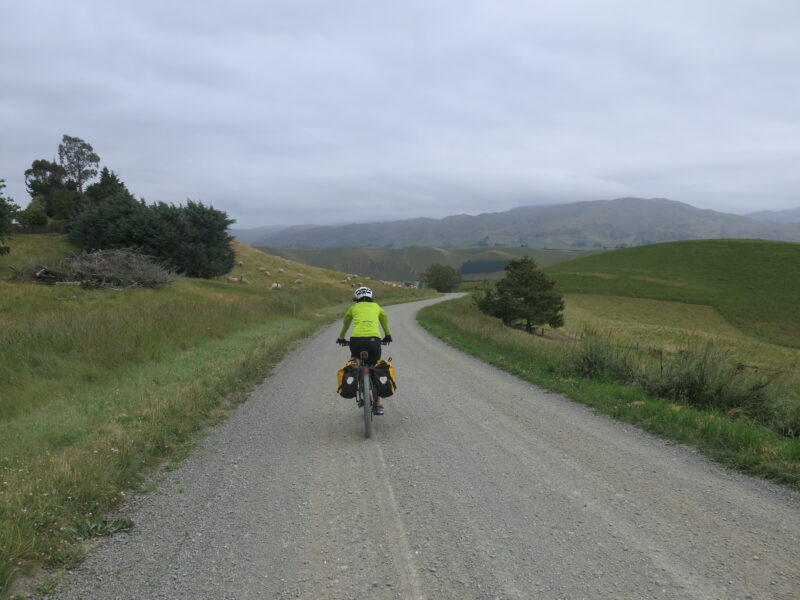
Waipara Gorge to Christchurch
The benefit of a long second day was a shorter ride home on the final day (84kms to north Christchurch). We had a few more hills at the beginning of our ride, before a mostly flat ride back to the city.
I’ve described the route from Pyramid Valley to Christchurch before, so I won’t repeat it here. There are a few tough climbs (and a few hairy gravel descents) and one river crossing, but it’s not a difficult ride. There’s very little traffic until you reach the outskirts of Rangiora, other than a short busy stretch through Amberley. Then it’s cycleway through to Kaiapoi and Christchurch.
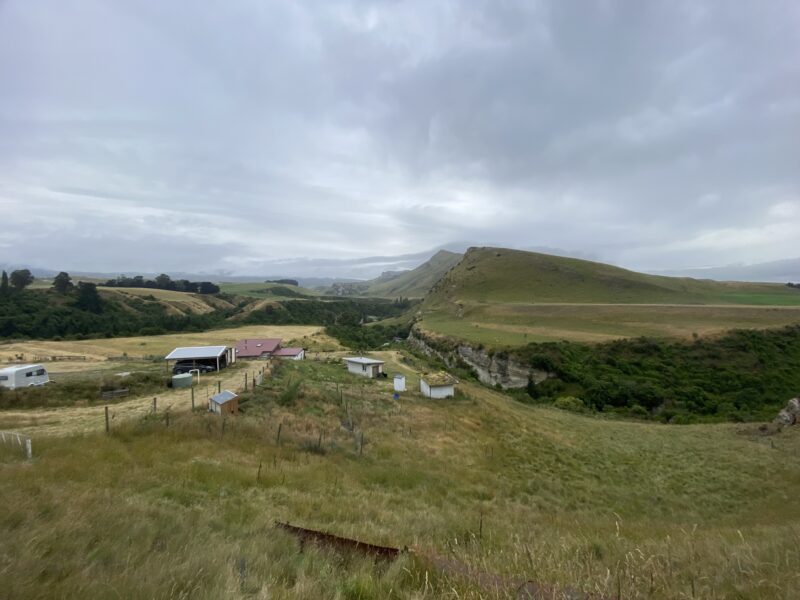
The practical stuff
- The Coastal Pacific train is a daily service until 7 May 2024, then pauses over winter, starting up again on 19 September 2024. Make sure you book your bike as extra luggage when you buy your tickets.
- Accommodation options along the route are limited. We booked a cabin through Mt Lyford Holiday Homes, and Mt Lyford Lodge also offers accommodation. There are a few more options in Culverden (motels and the hotel) and a scattering of AirBnBs in other places.
- At Waipara Gorge, we stayed at the lovely Karetu Downs, a hill country sheep and cattle farm. The owners run a bed and breakfast from their beautifully maintained homestead and guests are welcome to stroll around the gardens and check out the farm animals. Highly recommended.
- You can get food and drink (and make a toilet stop) at all the towns along the way – Waiau, Culverden, Hawarden, Amberley, Rangiora and Kaiapoi. Note that Mt Lyford Lodge is only open for dinner from Thursday to Sunday.

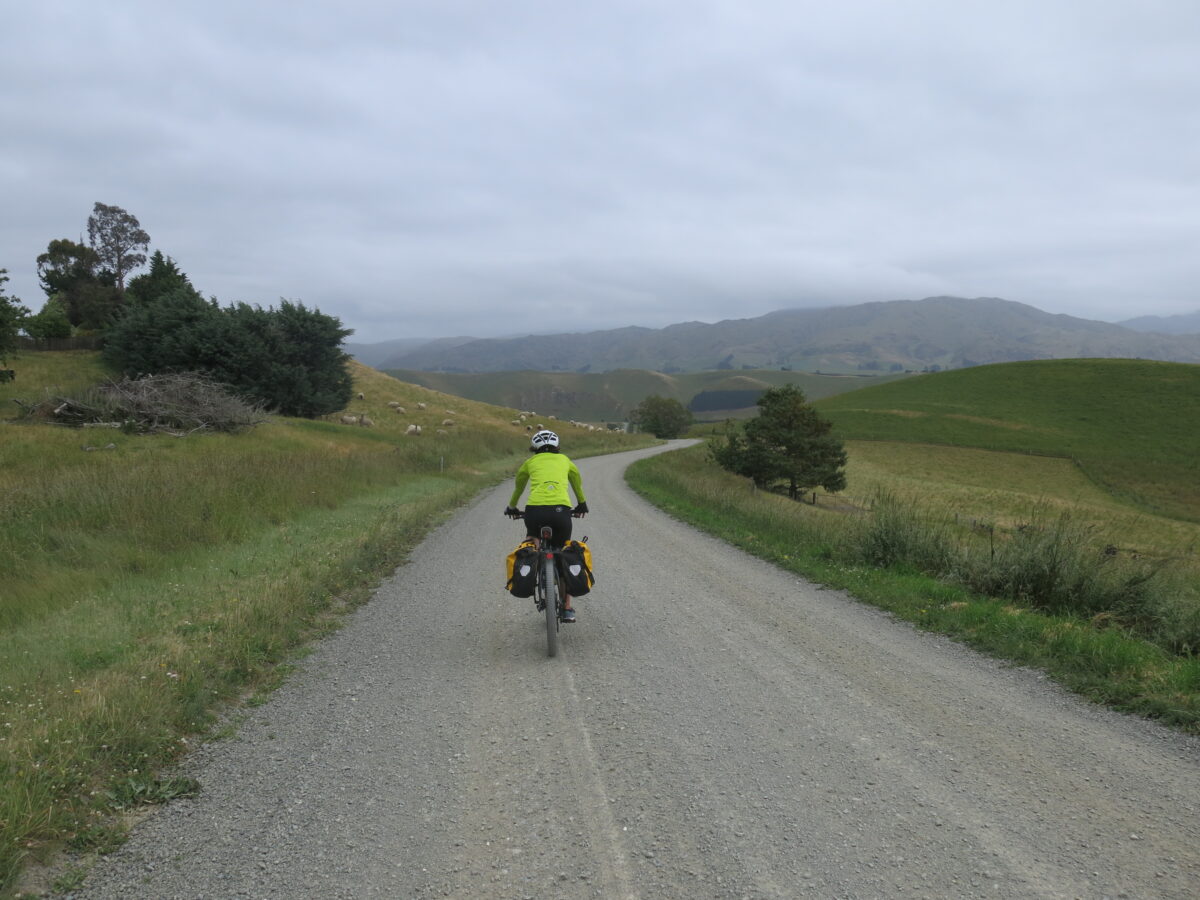
What a great trip, very inspiring! Thanks so much for sharing.
Kiwi rail are really missing the boat when it comes to bikes on trains, we took the coastal train to Picton a few years ago the limit for bikes was 2 so no one else could book a bike on the day we rode. There is a huge market ready to be tapped with all the E bikers, bike tourers etc wanting to spread the rides further.
Planning to do the hurunui ride this Easter so thanks for the firsthand account.
Thanks for a great account. How things change – it wasn’t so long ago turning up to a rail journey with a bike unannounced was east, it was placed in the guards van no charge and no hassle.
In the UK, back in the 1980’s my stress was guessing which position along the platform the guards van would stop at as the Intercity 125 cruised in. Whether, if you got it wrong the ticket collector would allow a bike to sit in the luggage space in a standard carriage and whether you could get it through the door prior to impending departure.